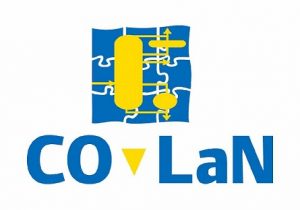

Sergej points out that no change was brought to the Thermo SIG charter. He then gives the list of persons and organizations having an established membership in the SIG, highlighting the core team attending most of the meetings called by the SIG. Then he lists the SIG main activities over the period. Three different areas have been addressed, different but with some overlap: the Custom Data interface specification, the Chemical Reactions interface specification and the errata and clarifications on the Thermodynamic and Physical Properties interface specification in version 1.1.
The first activity develops a completely new interface specification, the second activity reviews and redesigns an existing interface specification while the third activity concerns the maintenance of an existing interface specification.
At the previous CAPE-OPEN Annual Meeting, the Thermo SIG had set its goals for the upcoming period within its activity report for the period till September 2017. The plan called for addressing persistability and/or clonability of Custom Data: it has been done.
Then the plan called for finishing up the review of the Chemical Reactions interface specification with a Request For Comments being launched in January 2018. While the objectives were met on the topic of multiple Compound Slates, the formulation of the business cases started then stopped by lack of resources while some good progress, but incomplete so far, was made on the issue of heat balance. To be true the work necessary on the Custom Data interface specification revealed itself as more important than expected.
All the above contributed to the delay observed in sending out a Request For Comment on the Chemical Reactions interface specification.
Then Sergej goes on explaining the modifications brought to the Custom Data interface specification.The major change lies into the Custom Data being accessed as a CapeInterface rather than a CapeVariant. Custom Data is now represented as a Custom Data Container, a new object while the previously defined Custom Data Owner becomes the Custom Data Source.That change was necessary in order to support inter-thread or inter-process persistability. A Request For Comments has been issued early September and its deadline is moved back to November 1, 2018 in order to gather new comments on top of the ones received already. Sergej thanks the contributors to the RFC.
Within the Chemical Reactions interface specification document, a new Use Case was added on the validation of reactions, a step now inserted in the validation of a Reactor. But the major progress has been on the heat balance issue with the introduction of a new reaction property delivered by a Chemical Reaction Server and making it possible to close any gap between the heat effects of reaction calculated by a Property Package and the heat effects of reaction calculated by a Chemical Reaction Server. Sergej then gives an example how this new property is calculated and used in one example.
The activities ahead are the analysis of the comments received through the RFC on the Custom Data interface specification and to finalize the Chemical Reactions interface specification. As of now it seems that what is still missing are additional examples about the enthalpy correction calculation and use.
